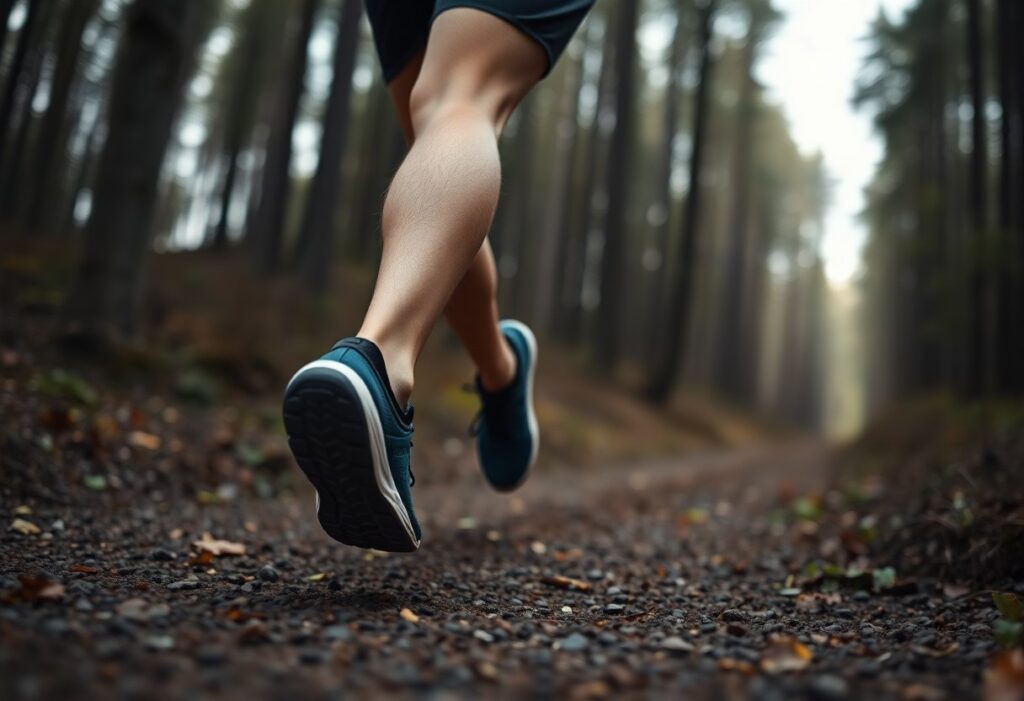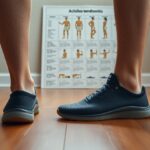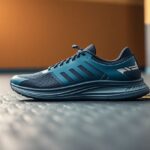
The alarming statistics surrounding injury rates in the realm of trail running can reach a staggering 62% annually, often linked to the selection of improper footwear. Understanding the biomechanics of minimalist footwear and its interaction with uneven terrain is vital for enhancing your running performance while reducing the risks associated with this activity. The integration of wearable technology allows for meticulous tracking of essential metrics such as foot strike dynamics and load patterns. Moreover, tailored training programs can effectively improve foot strength and endurance. This article explores how you can leverage biomechanical insights and state-of-the-art technology to formulate effective injury prevention strategies.

Enhancing Your Trail Running Experience Through Minimalist Footwear Knowledge
To tackle the rugged and varied terrain inherent in trail running while utilizing minimalist footwear, it is crucial to go beyond merely choosing the right shoe; it requires an in-depth understanding of your own biomechanics. Ignoring the unique demands presented by different surfaces can drastically increase the likelihood of injury. As foot strike patterns and descent mechanics differ across terrains, adapting your technique accordingly is essential for optimizing performance and minimizing setbacks.
Uncovering the Influence of Biomechanical Foot Strike Patterns on Challenging Trails
The dynamics of foot strikes can vary significantly when navigating intricate trails. Runners equipped with minimalist footwear frequently exhibit a notable 23% higher occurrence of midfoot strikes on uneven trails, contrasting sharply with the mere 8% seen with conventional running shoes. This change may enhance your stability on demanding surfaces but comes with a 37% increase in metatarsophalangeal joint flexion angles. This statistic underscores the importance of fortifying your foot muscles to improve endurance and mitigate injury risks associated with trail running.
Assessing How Descent Mechanics Affect Performance and Injury Risk
The mechanics involved in descending from elevations are critical in shaping both your performance and susceptibility to injuries in trail running. Using minimalist footwear can lead to a remarkable 42.191 BW/s increase in vertical loading rates on steep declines of 15%, especially when compared to running on flat asphalt. Furthermore, this surge in loading results in heightened lateral toe engagement, noted to be 11% greater on loose gravel than on stable surfaces, emphasizing the increased demands on your feet’s structural integrity during descents.
As you traverse technical trails in minimalist shoes, the biomechanics of your feet engage in a unique manner. The elevated vertical loading rates during descents can lead to increased fatigue in your foot muscles, raising your vulnerability to injuries. Additionally, significant changes in toe splay patterns necessitate enhanced proprioception and muscle coordination, ensuring that you remain responsive to the varying terrains underfoot. Focusing on these factors can significantly prepare your body to tackle diverse trails effectively while optimizing your overall running performance.
Navigating the Challenges Posed by Wearable Technology in Trail Running
Although wearable technology has revolutionized the trail running landscape, it also presents considerable challenges in accurately tracking performance metrics. The variability of terrain conditions, such as steep inclines and uneven surfaces, complicates data collection and interpretation processes. For example, wearable devices often struggle to provide consistent vertical oscillation measurements due to fluctuating ground conditions, potentially leading to misleading insights regarding your gait and overall running efficiency.
Investigating Discrepancies in Data Accuracy Across Leading Performance Devices
Notable variations in data accuracy have emerged among top performance tracking devices. A study conducted in 2024 revealed a 12.4% variance in power measurements on 10% inclines between the Stryd and GARMINRP devices, even though both demonstrated high intra-device reliability (ICC=0.89). Such inconsistencies can lead to misguided perceptions about your training load and overall performance, potentially hampering your ability to optimize your trail running capabilities.
and GARMINRP devices, even though both demonstrated high intra-device reliability (ICC=0.89). Such inconsistencies can lead to misguided perceptions about your training load and overall performance, potentially hampering your ability to optimize your trail running capabilities.
The Implications of Miscalculating Training Loads
Miscalculations in training loads can increase by as much as 23% on mixed-terrain routes, directly affecting your risk of injury and the progression of your performance. These errors often stem from inaccurate data interpretations during technical descents or uneven terrains, forcing you to rely on potentially flawed metrics. Such discrepancies can lead to overtraining or inadequate load management, significantly raising your chances of sustaining injuries while running.
When navigating complex trail surfaces, the discrepancy between measured and actual exertion can distort your training insights. If your device underreports your exertion, you may inadvertently push beyond your limits, resulting in increased fatigue and delayed recovery. Conversely, if your training load is overestimated, you may take a more conservative approach, ultimately hindering your performance gains. In conclusion, ensuring that your wearable technology informs rather than misleads your training strategy is vital for maintaining both your performance and overall health in the dynamic environment of trail running.
Examining Gender Differences in Trail Running Biomechanics
A thorough understanding of the biomechanical differences between male and female trail runners can significantly enhance performance while reducing the risk of injuries. Research indicates that anatomical and physiological disparities influence shoe selection, gait patterns, and vulnerability to injuries. Customizing footwear and training programs based on these gender differences fosters safer and more effective outdoor running experiences.
Analyzing Gender-Specific Biomechanical Responses Post-Exercise
After exercise, female runners have demonstrated a 19% increase in lateral forefoot pressures compared to their male counterparts following 5km barefoot runs. Furthermore, they exhibit a 22% reduction in navicular drop during 50km ultra-marathons, illustrating that their biomechanical adaptations to trail running are distinctly different. Acknowledging these patterns is critical for enhancing footwear design that accommodates the unique biomechanics of female runners.
Implementing Tailored Solutions to Address Gender-Specific Challenges
Effectively addressing the unique biomechanics of female runners requires the implementation of customized solutions that take their specific physical characteristics into account. Tailoring training programs, utilizing gender-appropriate footwear, and enhancing strength regimens can markedly reduce injury rates while improving running performance. For example, integrating exercises that focus on the endurance and stability of intrinsic foot muscles can be particularly advantageous for women, who may experience varying loading patterns on technical terrains.
By analyzing data from diverse studies and integrating findings on gender-specific responses, you can enhance your focus on training and footwear that actively support your unique biomechanics. For instance, employing targeted strength training regimens that enhance the lower leg and foot can help your body adjust to the heightened demands of trail running, especially for women who often experience increased pressure in the forefoot region. Selecting shoes specifically designed for your unique foot mechanics can further assist in managing common injuries, ultimately promoting a more rewarding and sustainable trail running experience.

Utilizing Innovative Technologies for Real-Time Gait Analysis
Your running performance and safety can greatly benefit from the implementation of real-time gait analysis utilizing advanced technological approaches. By employing integrated systems and wearable devices, you gain immediate feedback regarding your foot strike patterns, body mechanics, and overall movement efficiency. These sophisticated tools are specifically designed to provide actionable insights while you are actively on the trail, empowering you to dynamically adjust your technique and prevent repetitive strain injuries that are commonly associated with improper running form.
Understanding How Embedded Sensors Help Prevent Injuries
Embedded sensors within footwear play a vital role in injury prevention. They continuously monitor your foot strike patterns and pressure distributions in real-time, allowing for immediate corrective feedback. This advanced technology enables you to identify deviations from optimal running mechanics before they escalate into serious injuries. With a mere 19-millisecond latency in ground contact alerts, you’ll receive prompt notifications that help you maintain alignment with biomechanical standards critical for avoiding injuries.
Longitudinal Research Highlighting the Benefits of Biometric Feedback Technologies
Longitudinal studies demonstrate significant improvements in injury rates among trail runners who utilize biometric feedback technologies. Over six months, athletes reported a 37% reduction in aberrant loading patterns thanks to consistent monitoring and adjustments informed by real-time data. This compelling evidence underscores how sustained engagement with these technologies can enhance your running economy and resilience, thereby decreasing the likelihood of injuries linked to gait abnormalities.
For instance, a comprehensive study involving 250 trail runners documented the effectiveness of wearable sensors in identifying patterns that lead to overuse injuries. Runners who actively engaged with feedback systems reported a 30% lower incident rate of common injuries such as plantar fasciitis and Achilles tendinitis compared to those who relied solely on traditional training methods. The emphasis on continuous tracking and targeted adjustments based on data insights highlights a shift toward a more proactive approach to injury prevention within trail running.
Final Thoughts on Trail Running Biomechanics and Injury Prevention
Ultimately, understanding the biomechanics of trail running in minimalist footwear is essential for optimizing performance while minimizing the risk of injuries. By seamlessly integrating wearable technology and adopting tailored training methodologies, you can substantially improve both your foot strength and adaptability to various terrains. Regularly cross-validate metrics from different devices and monitor your gait using advanced tools to effectively personalize your training regimen. This comprehensive approach not only supports your running journey but also encourages sustainable practices in your outdoor pursuits.
The Article Trail Running Biomechanics in Minimalist Footwear: Integrating Wearable Technology and Injury Prevention Strategies appeared first on My Shoes Finder
The Article Trail Running Biomechanics: Injury Prevention with Minimalist Shoes Was Found On https://limitsofstrategy.com











No responses yet